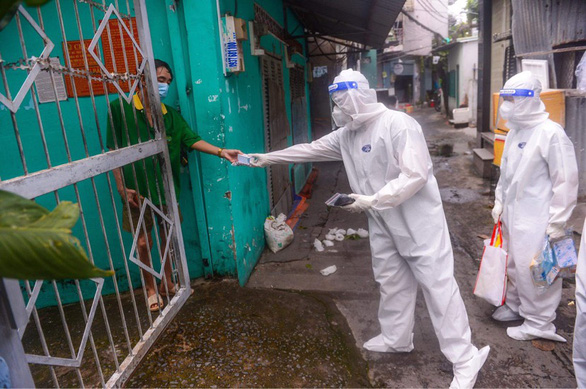Binh Duong Province accounted for 6,050 of the infections

Vietnam’s Ministry of Health confirmed 14,219 domestic coronavirus cases on Monday, along with over 9,000 recoveries and 315 fatalities.
The latest local infections were recorded in 41 provinces and cities whereas the nation also reported five imported cases on the same day, the health ministry said in a report.
The ministry had logged 12,752 domestically-infected patients on Sunday.
The agency detected 7,504 of the new cases in the community, with the remaining detected in isolated areas or centralized quarantine facilities.
Binh Duong Province 6,050 local infections, up by 636 patients; Ho Chi Minh City 5,889, up by 932 cases; Long An Province 524; Dong Nai Province 491; Khanh Hoa Province 126; Hanoi 110; and Da Nang 54.
Vietnam has documented 445,291 community transmissions in 62 out of its 63 provinces and cities since the fourth – and worst – virus wave emerged in the country on April 27.
Ho Chi Minh City is most affected with 215,810 patients, followed by Binh Duong Province with 110,258, Dong Nai Province with 23,132, Long An Province with 21,457, Tien Giang Province with 9,438, Khanh Hoa Province with 6,434, Da Nang with 4,176, Ba Ria-Vung Tau Province with 3,406, and Hanoi with 3,436.
By comparison, Vietnam confirmed a combined 1,570 locally-acquired infections in the previous three waves.
Recoveries have reached 228,816, with 9,014 patients declared recovered on Monday.
The health ministry recorded 315 deaths on the same day, including 245 in Ho Chi Minh City and 39 in Binh Duong Province, taking the toll to 11,064 fatalities.
Vietnam has confirmed 449,489 patients since the COVID-19 pandemic first struck it early last year.
The Southeast Asian country has received about 27 million vaccine shots as yet, administering more than 19.7 million doses since vaccination was rolled out on March 8.
Around 2.5 million people have been fully vaccinated.
Health authorities aim to immunize at least two-thirds of a population of nearly 98 million people against COVID-19 by the first quarter of next year.







